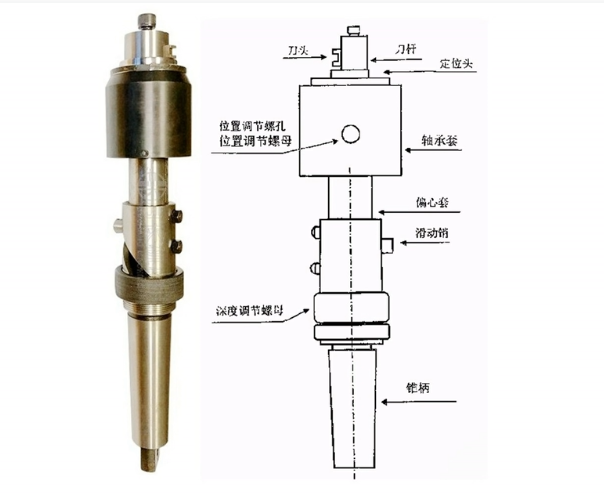What Are The Tube Sheet Grooving Tools?
Tube Sheet Grooving Tools: Complete Technical Guide
What is Tube Sheet Grooving?
Tube sheet grooving is an essential industrial machining process that involves cutting specific shaped grooves (such as annular grooves and V-shaped grooves) on the inner surface of tube sheets in heat exchangers, boilers, and other pressure vessels. This process significantly enhances the connection strength, sealing capability, and anti-pull-off ability between tubes and tube sheets. The quality of grooving directly affects the reliability of the tube expansion process, making it a critical operation in industrial manufacturing.

Professional tube sheet grooving tool in operation
Core Types and Features of Tube Sheet Grooving Tools
1. Mechanical Slotter
Structural composition: Main body, tool bar, blade, and support customized design
Working principle: Radial rotation cutting of the tool head is achieved through eccentric spiral structure or hydraulic drive. For example, the spiral slotter drives the tool bar to rotate through the sliding pin to complete the processing of uniform depth slots.
Advantages:
- High precision: Groove depth tolerance can be controlled within ±0.02mm, with surface roughness Ra≤3.2μm
- Efficient adaptation: Single tool can cover multiple apertures (E1 type: 10-32mm, E2 type: 38-80mm)
- Multi-groove processing: Supports coaxial multi-groove cutting with consistent groove spacing
2. CNC Slotting Equipment
CNC milling machine/machining center: Utilizes special milling cutters (such as T-slot milling cutters), suitable for complex grooves (dovetail grooves, special-shaped grooves)
Laser slotting machine: Non-contact processing ideal for thin plates (≤10mm) or difficult-to-cut materials like titanium alloys, eliminating mechanical stress deformation
3. Grooving Tools for Hydraulic Expansion Tubes
TMKC series groovers: Specially designed for hydraulic strength expansion, capable of processing 8-12mm wide grooves, suitable for high hardness materials including stainless steel
Operational features: Driven by radial drilling machines, single hole processing takes only 0.5-1 minute, increasing efficiency by more than 3 times
Technical Parameters and Selection Guide
Key Parameters
| Parameter | Typical Value/Requirement |
|---|---|
| Tool Speed | 63-200 RPM (Mechanical Type) |
| Power Source | Drill press or CNC equipment (Clockwise rotation) |
| Groove Depth Adjustment Range | Controlled by adjusting nut, accuracy ±0.05mm |
| Applicable Aperture | 10-80mm (Covered by different models) |
Selection Criteria
Material matching:
- Carbon steel/stainless steel: Carbide coated tools (TiAlN coating preferred)
- Titanium alloy: Laser slotting or diamond coated tools
Groove requirements:
- Sealing groove: Choose wide groove tools (TMKC-10 type)
- Expansion groove: Ensure rounded groove bottom to avoid stress concentration
Operation Process and Best Practices
Standard Operating Procedure
- Tool selection: Customize tool bar and blade according to hole diameter and groove width requirements
- Clamping calibration: Use Morse taper shank (4#/5#) to fix on drilling machine, ensuring perpendicularity error between tool and tube sheet is ≤0.02mm/m
- Processing debugging: Start at low speed (≤200 rpm), gradually press down to complete cutting, avoiding tool overheating
- Quality inspection: Use plug gauges or coordinate measuring machines to verify groove depth, width and position accuracy
Safety and Maintenance Guidelines
- Lubrication requirements: Regularly add lubricating oil to sliding parts to prevent jamming
- Tool maintenance: Replace worn blades promptly, tighten bolts appropriately (avoid over-tightening causing breakage)
- Prohibited operations: Avoid horizontal grooves on load-bearing wall structures to prevent compromising structural integrity
Expert Tip
For optimal results with tube sheet grooving tools, always match the tool material to the tube sheet material and consider the operational environment (temperature, pressure, and corrosive elements) when selecting the appropriate grooving solution.
Industry Applications and Future Trends
Typical Application Areas
- Energy industry: Processing sealing grooves of tube sheets in nuclear power plant heat exchangers
- Chemical equipment: Expansion grooves of reactor tube sheets to improve corrosion resistance
- Refrigeration systems: Multi-groove processing of evaporator tube sheets to ensure refrigerant sealing
Technology Development Trends
- Intelligence: Integrated sensors monitor cutting forces in real time with adaptive parameter adjustment
- Green manufacturing: Implementation of MQL (Minimum Quantity Lubrication) technology to reduce cutting fluid pollution
- Hybrid processing: Combining laser cutting and machining to achieve high-precision special-shaped grooves
Conclusion
Tube sheet grooving tools serve as the "precision carving knives" of industrial manufacturing, with their selection and application directly impacting equipment lifespan and operational safety. As material science and intelligent technologies advance, grooving tools are evolving toward higher efficiency and lower energy consumption. When selecting tools, manufacturers must comprehensively consider material properties, processing requirements, and cost-effectiveness to achieve dual optimization of quality and economy in their operations.

